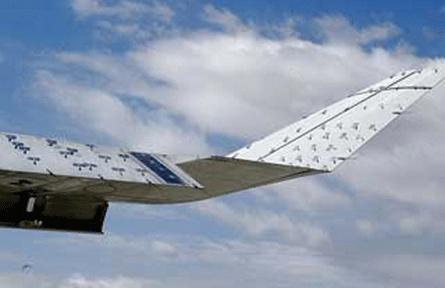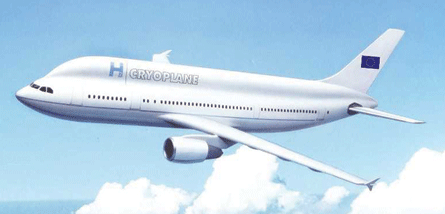Europe and the USA are investing in aeronautics research, but in different ways. Who will win the race to deliver the next dominant commercial aircraft?
While Europe and the USA fight it out in the World Trade Organisation with claim and counterclaim over subsidies for Airbus and Boeing, it is clear aerospace firms worldwide gain long-term benefit from government-aided research and development. But which side, Europe or the USA, is really ensuring its industry will win the technological race to deliver market-dominating next-generation commercial aircraft?
For some research watchers it is simply a matter of adding up the spending to decide who is the winner. "The standard argument is the USA has a tremendous scale advantage. And in my view the US industry is increasing its competitiveness. It is the sheer scale of their spending they are going to get some kind of a [technology advancing] hit," says Keith Hartley, professor of economics at the UK University of York's centre for defence economics.
US spending on aerospace and defence R&D, by industry and by the government through NASA, the Defense Advanced Research Projects Agency, Air Force Research Laboratory and other organisations, historically has been substantially larger than the combined national and European Union investment. But NASA's budget for civil aeronautics research has been cut dramatically in recent years, while Europe has been stepping up its funding.
German aerospace centre DLR executive board member Joachim Szodruch recognises the disparity: "The total research budgets in the EU are still quite a bit smaller than in the USA," he says, but Europe's approach of closer co-operation on research "is one way to compete with less organised, but higher budget approaches in other countries". Szodruch is chairman of the external advisory group for aeronautics to the European Commission and co-chairman of the Advisory Council for Aeronautical Research in Europe (ACARE).
After two years of restructuring, NASA is resuming aeronautics research, but under a scaled-down programme focused on two main areas: supporting the Next Generation Air Transportation System project to modernise US airspace and "fundamental aeronautics", which the agency describes as leading-edge research in the areas of subsonic and supersonic fixed-wing aircraft, rotorcraft and hypersonics. NASA plans to spend about $450 million a year on aeronautics research - perhaps a third of what it spent through the 1990s.
For Europe, identifying key aeronautical technologies became more organised during the European Union's Fifth Framework research programme (FP5), which lasted from 1999 to 2002, with the involvement of ACARE, the members of which are industry, academia, pan-European aviation agencies, the EC, EU governments and their related agencies.
Since 2001 the EU has drawn up its aeronautics research priorities through the ACARE process. This has produced the Strategic Research Agenda (SRA), which sets out how the ACARE long-term technology goals can be met through research. The EU's Framework Programmes are the realisation of the SRA plan.
Under the three-year FP5, the EU spent €700 million on its first specifically aeronautical Framework programme, called new perspectives for aeronautics. The Sixth Framework put aeronautics and space research together. FP6 lasted from 2002 to 2006, with a budget of €1.07 billion and more than 140 projects. Of the total, €840 million was for aeronautics.
For the Seventh Framework, aeronautics has been placed within transport, which has a total research budget of €4.16 billion and will last for six years, from 2007 to 2013. The start of FP7 was delayed because of difficult negotiations on the overall EU budget, called the financial perspective, and 2007 will only see a process of selecting projects, with work only really getting under way in 2008.
But Europe's research policy is not just about competing with the USA, according to some experts. "In the USA 15% of public research funding is federal, in Europe it's 1%. In European programmes we have a different target, to integrate. You have collaboration between industry and universities in more than one geographical area. We select a few industrial sectors, and the aim is to integrate them," says Vasilis Zervos, a researcher at the industrial economics division of the University of Nottingham's business school in the UK.
Integration may be a goal, but the themes of FP7's work programme are explicitly focused on practical improvements for today's air transport market such as helping manufacturers achieve goals of 50% reductions in the costs of aircraft development and operation. These are reflected in the first call for FP7 projects - those to be selected this year and properly begin by January 2008 - which have a budget of €217 million.
FP7 differs from its predecessors in having two new public-private partnership arrangements, the Clean Sky Joint Technology Initiative and the Single European Sky Air Traffic Management Research (SESAR) programme. SESAR will have a budget of €2.1 billion from now to 2020 to modernise Europe's air traffic management system.
Clean Sky's targets are a reduction of up to 40% in carbon dioxide emissions, a 40% reduction in nitrogen oxides and a 20dB reduction in noise levels around airports. Wiithin Clean Sky are projects called Systems for Green Operation, Green Engines, Green Rotorcraft, Eco-design Smart Wing Aircraft and Regional Air Transport. All these are expected to involve demonstrator vehicles.
But for academics studying aeronautics, government procurement funding could be an equally important driver of technology. For Hartley this is key. "The EU must organise its defence procurement," he says. Szodruch agrees the emphasis on defence R&D in the USA is not a diversion of energies away from the civil sector. "The massive support of military technologies in the USA has an influence in the civil area as well," he says. "The US focus on military reflects the market, which is government demand. The European focus on commercial reflects the lack of a European defence [procurement] arrangement." According to European aerospace and defence trade body ASD-Europe's 2006 report on industry performance, the continent's governments represent only a third of the industry's turnover.
For Zervos the integration approach being taken to research is an intermediate step to getting a European industrial base as integrated as the USA's. "You have to be able to walk before you can run," he says.
Although the US industry and government research and procurement policies, on balance, are viewed as potentially delivering winning technologies, Szodruch does not believe either side has found the perfect formula yet, saying: "One thing is clear to me, whatever system we look at, there is still ample room for improvements in order to deliver better products in shorter timeframes."
Europe's research is targeted at areas including advanced wings, quiet supersonics, efficient airliners and alternative fuels |
Source: Flight International




















